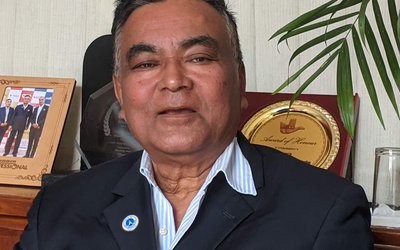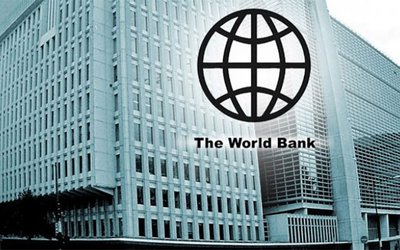
What change has happened over the last one year?
When I was appointed Managing Director of Nepal Electricity Authority a year ago, there were many challenges beneath my hot chair as well as the opportunities for reform. Power cuts lasted 6-8 hours and that was a harsh reality. During the winter, the load shedding prevailed for up to 12 hours a day. Our one and only mission was to end the load shedding and make Nepal bright. My dream was to make Nepal Electricity Authority a profit making, from a loss making, venture in its balance sheet. The 37-seven point program of the energy minister also raised these issues with priority. One of my mandates was to end load shedding and reform the NEA.
How was ending load shedding possible?
One of the big assets for me was very capable, experienced, competent, determined, confident, motivated and honest human resources within the NEA. When I joined, we also had a strong backing from the Minister of Energy, the Secretary, administration and political leadership. This gave us energy to improve the institutional capability and carry out reforms. The current energy minister continues to support us. Most importantly, common people backed us in our efforts.
When you talked about ending the load shedding, how did others take it?
As there had been long hours of load shedding for decades, nobody believed that it would end anytime soon. However, I was determined in my vision that it is possible through the efficient management of supply and demand. Keeping the goal in mind, my team started the work from the beginning. We achieved the first success when we were able to make Laxmipuja load shedding free. This test boosted our morale and spirit. This success of supply and demand management inspired us to take the program ahead. This was the entry point for ending the load shedding. After this, we expanded our initiative in other major cities of Nepal. We were again successful in our mission.
How about the situation in industries?
After ending load shedding for household consumers, we moved to make industrial areas load-shedding free. We decided to cut the power to the industry during peak hour only. I am very happy that the end of load shedding also has major implications in our economy, increasing productivity. Currently, there are only 2-3 hours of load shedding in the industry and it is also in the peaking hours. There is undisrupted power supply to all. However, there are certain technical problems in cities like Bhairahawa, we will solve the problems very soon.
How was NEA’s system affected by floods?
NEA’s system suffered a heavy loss. Despite damage of our system during the flood in eastern and central terai, NEA’s capable and dedicated technicians restored all the system within a short time. The floods badly damaged many substations and some of them were submerged in the water, including the sub-station of Bharatpur and Duhabi in eastern Nepal. Good things were that these stations were restored in time by hardworking technicians.
What is your future plan?
If we remain satisfied with ending the load-shedding, our future power supply will suffer more acute problems. This is the reason NEA is now working to accelerate the construction pace of abandoned power plants and transmission lines. We are moving to restructure not only NEA but also the entire energy sector. Under the slogan of Nepal’s water and people’s investment, we are constructing projects ensuring the investment of people with a company model. This is one of the major shifts in energy sector. NEA will now focus its attention to peaking projects, storage projects and construction of transmission lines. The face of NEA has changed with the change of people’s perception. This is the time for NEA staff to feel proud. For this, we need to further improve our services.
How do you see the challenges?
The challenges before us are to maintain undisrupted power supply with quality and safety in mind. It will take a bit of time. My vision is not just to supply regular, quality, adequate, secure and dependable electricity but also making NEA strong and capable profit venture. In the last one year, I have taken several steps. I have already presented financial restructuring of NEA to the government and cabinet has already agreed to implement part of the plan.
What about the financial state of NEA?
Last year, NEA was in a loss of 3.6 billion rupees. However, this year NEA has 2.40 billion rupees in operational profit. Last year, NEA’s net loss was 8.89 billion rupees. This year it has come down to 970 million. Even NEA's annual program projected loss of 7.50 billion rupees for this year. The loss will be further reduced once the audit will complete. I have also taken a certain initiative for administrative reforms. Under this, NEA has developed a transparent transfer modality. NEA also took several steps to improve the service, reduce power loss and collect the uncollected revenues. We have also conducted the elections of NEA’s Employees Union.
How do you carry out the future program?
NEA has set up companies to carry out the new projects and to ensure people’s investment. NEA has already decided to construct new projects under the company model. NEA has already established companies for Upper Dudhkoshi, Tamor, Uttarganga, Andhikhola, Rahughat, Modi, Tamakosi V. NEA has also established its own company for consultancy service with shares from Transmission Company, Generation Company. There are two separate companies for Transformer and Electric Polls and tower. There is a separate company for energy trading and offices have already been established as per the provincial structure.
What about the old projects?
In the production sector, there is a major success in Chameliya as it is at the final stage of generating the electricity. It will start the generation within two months. Similarly, the work of 60 MW Trishuli 3 A has already started with a target to complete within 20 months. Similarly, 14 MW, Kulekhani III will complete within six months. The tender process of 40 MW Raughat is under way. Similarly, the construction process of 140 MW Tanahu and 37 MW Trishuli III B has already started with the tender process in final stage. The 456 MW Upper Tamakosi, which was completely defunct following the earthquake, has accelerated its work with a target to complete in new schedule. With the initiative from the prime minister and energy minister, we solved the problems surfaced in the priority Upper Tamakosi project. Similarly, the process of construction of 25 MW Rolwaling diversion project has taken a shape following the acquiring of license.
How about the other projects?
Similarly, the pace of projects under Chilime Company, including 102 MW middle Bhotekosi,111 MW Rasuwagadi, 42.5 MW Sanjen and 14.8 MW Sanjen’s work has currently accelerated. These projects were stalled for almost a year following the earthquake. For the first time, 144 MW Kaligandaki A,70 MW middle Marsyangdi and 69 MW Marsyangdi and 22 MW Chilime are used for peaking hours. They help to manage the supply of electricity. We were able to generate over 8 percent energy from these projects. NEA also secured 210 MW Seti Chainpur hydropower project and feasibility study has already started.
How about the transmission line projects?
In the transmission lines sector, 220 kV Khimti Dhalkebar, 132 kV Hetauda-Kulekhani-Syuchatar second circuit completed. Similarly, 132 kV Balanch-Attariya, 132 kV Mahendranagar-Kohalpur transmission line and Chapabli 132/66/11 kV substation completed. Many substations over 100 MVA were improved and enhanced for their capacity to maintain the supply. Similarly, 132 kV Kataiya-Kusbaha and Raxual-Parwanipur transmission line completed. The construction of Dhalkebahar substation is at the final stage. Work on Kaligandaki and Marsyangdi corridor transmission lines is under way. The construction of the 400 kV khimti-Barbishe-Kathmandu transmission line started. With the support from Asian Development Bank, the 400 kV east-west transmission line has started. Many other projects of 132 kV are started. For the improvement power supply in Kathmandu, the tender for construction of 132 kV Gas Insulated substation has already been published. NEA line expanded in Rukum and Jajarkot. The grid connected solar PPA is under way in 21 places for 61 MW.
The tariffs for storage, peaking and run of the rivers have been fixed. Under the National Energy Security Policy, the PPA singed under the take and pay of 727 MW is converted to take or pay. PPA under take or pay was singed for additional 310 MW. Similarly, the PPA for the projects constructed under dollar PPA has been made transparent. We have already signed PPA for 3500 MW.
We were also able to hold Nepal India power sharing joint committee meeting which was stalled for almost seven years.
What is there for the future?
My future program is to construct more projects to achieve energy security with the investment of the people. NEA will take special initiative to construct storage and peaking projects and other alternative sources of energy to mix in NEA’s system. There is the need to construct high voltage transmission lines linking east west and north south including cross border transmission. We are also considering introducing smart meter reading. We are also planning to develop a system to supply up to 12000 MW of power in the major cities within ten years. We will launch further efforts to reduce the power loss in the system and power theft.
- IME GROUP: Expands Into Paper Industry
- Mar 24, 2025
- CPN UML: Instigated By India
- Mar 23, 2025
- ADB’S CHIEF ECONOMIST: Nepal Reduces Poverty
- Mar 11, 2025
- FM DR. DEUBA: A Successful Visit
- Mar 11, 2025
- MD GHISING: Target Of Personal Grudge
- Mar 09, 2025















